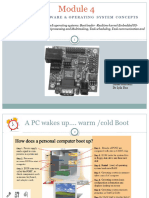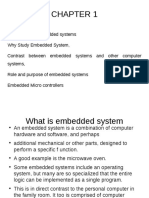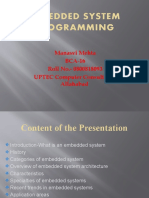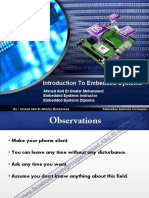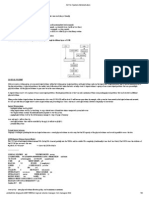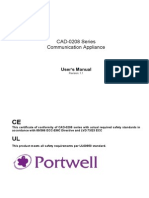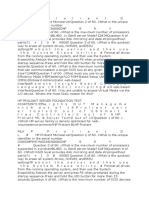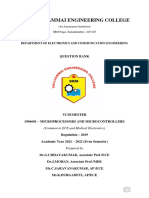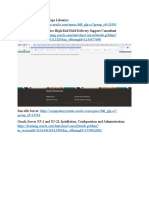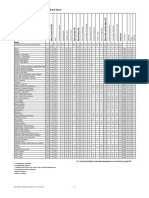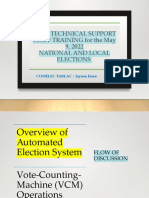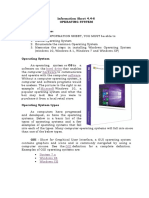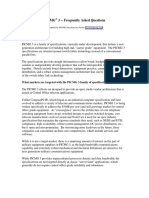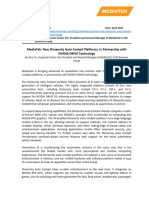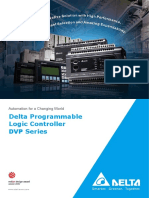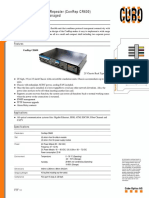0% found this document useful (0 votes)
4 views5 pagesSOFTWARE Architecture
The document outlines the architecture of an operating system in embedded systems, detailing components such as the kernel, device manager, networking protocol software, libraries, and an optional file system. It categorizes embedded operating systems into non-real-time, real-time, and mobile/handheld systems, each serving different application needs. Additionally, it discusses application and communication software, along with development and testing tools necessary for hardware and software development.
Uploaded by
sssalunkheb22Copyright
© © All Rights Reserved
We take content rights seriously. If you suspect this is your content, claim it here.
Available Formats
Download as PDF, TXT or read online on Scribd
0% found this document useful (0 votes)
4 views5 pagesSOFTWARE Architecture
The document outlines the architecture of an operating system in embedded systems, detailing components such as the kernel, device manager, networking protocol software, libraries, and an optional file system. It categorizes embedded operating systems into non-real-time, real-time, and mobile/handheld systems, each serving different application needs. Additionally, it discusses application and communication software, along with development and testing tools necessary for hardware and software development.
Uploaded by
sssalunkheb22Copyright
© © All Rights Reserved
We take content rights seriously. If you suspect this is your content, claim it here.
Available Formats
Download as PDF, TXT or read online on Scribd
/ 5

